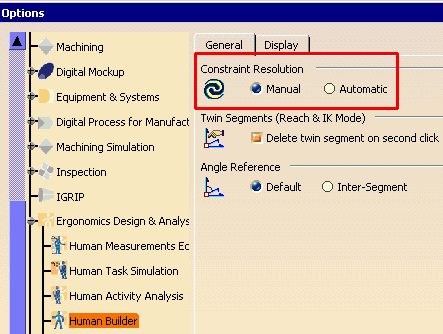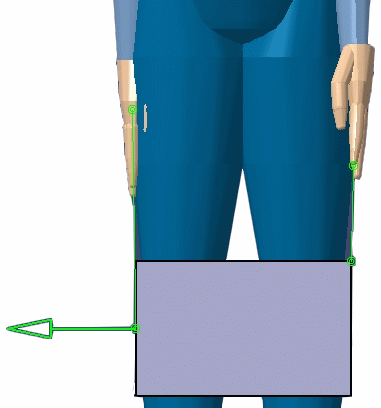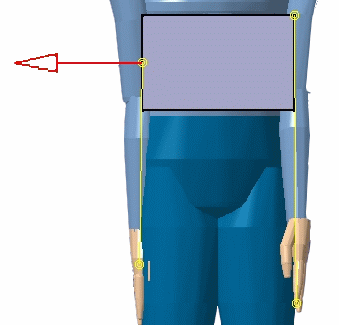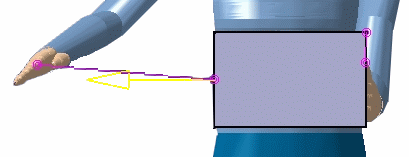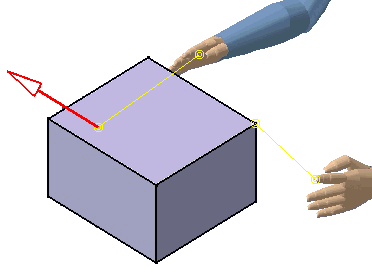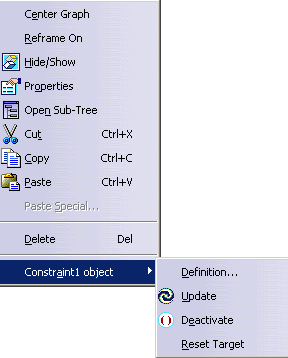|
|
The commands in the Manikin Constraints toolbar give you the capability to constrain the manikin in its environment. With constraints, the manikin can perform inverse kinematics (IK) to calculate the necessary posture needed to reach multiple specific targets. | ||||||||
| The following constraint topics are discussed in this task: | |||||||||
|
|
A constraint will always belong to one manikin. At any
given time, the list of constraints on a manikin will appear underneath
that manikin in the specification tree. Inactive constraints will also be
listed.
At any time, you may update the active constraints at each modification in the workspace (automatic update), or only update the active constraints when needed (manual update). By default, constraint update mode is set in the Manual
mode and you must select Update
In Automatic mode, the inverse kinematics will react as soon as the configuration of the environment changes; when the objects move, the inverse kinematics updates in real time. General optionsAs shown in the image below, you can change the update mode at any time by selecting Tools > Options > Ergonomics Design & Analysis > Human Builder. The Manual and Automatic update options are available in the General tab under the Constraint Resolution heading.
|
||||||||
|
|
Display optionsBy default, when constraints are displayed, the following colors, and line type and thickness indicate the current state of the constraint. Change the defaults in the Display tab of Tools > Options > Ergonomics Design & Analysis > Human Builder. |
||||||||
|
|
Creating constraints |
||||||||
|
|
From the samples directory, open:
|
||||||||
|
|
|
||||||||
Updating constraints |
|||||||||
|
|||||||||
|
|
Constraints and simulationsPermanent constraints are automatically disabled when a simulation is run to avoid conflicts with constraints created in MoveToPosture activities. When the Process Simulation command is selected, the constraint icon in the PPR tree changes, as shown below to indicate that the constraint is no longer active.
When you wish to enable the constraint after the simulation is finished, in the PPR tree, right-click on the constraint. Re-activate that constraint through the contextual menu that appears.
The constraint icon in the PPR tree changes to reflect that it is again activated.
|
||||||||
For more information about the specific types of
constraints, please read:
|
